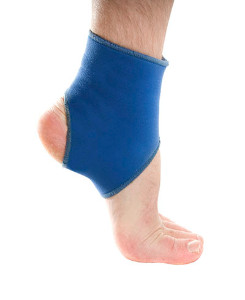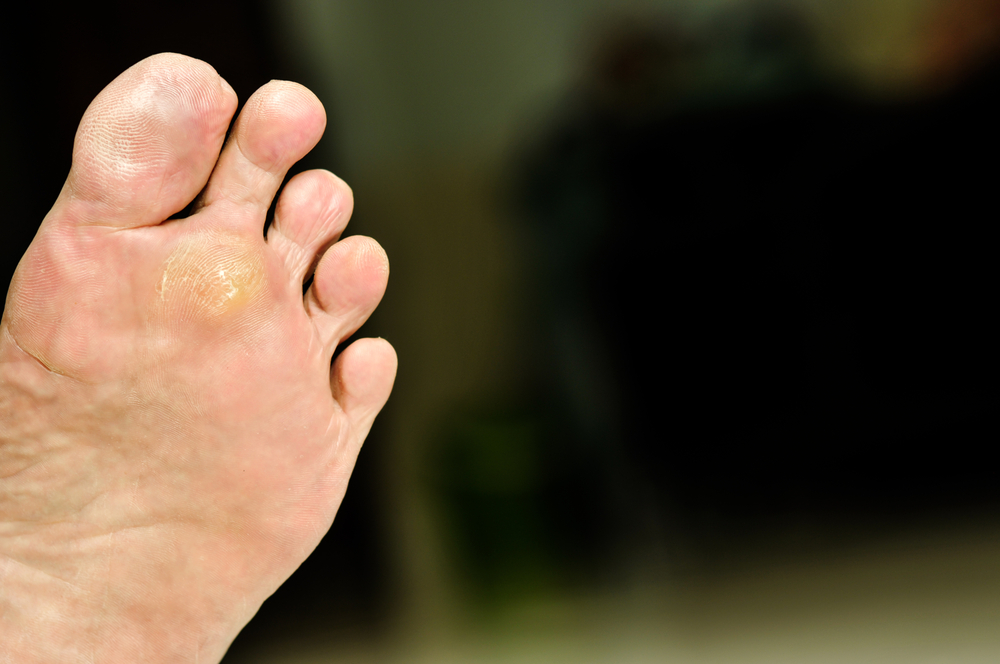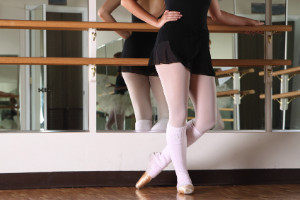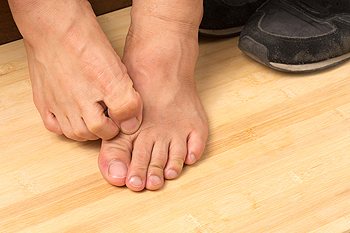Items filtered by date: August 2017
LA Dodgers’ Cody Bellinger Sprains Right Ankle
 Los Angeles Dodgers’ Cody Bellinger sprained his right ankle in a game against the Detroit Tigers. The rookie first baseman and outfielder sustained the injury while going for a catch. Fortunately, the sprain is said to only be a mild one. He will be removed from the lineup until he heals, which should not be long. Bellinger described the injury as being slightly swollen, but said he is otherwise feeling well. He is considered to be one of the Dodgers’ best players and has the potential to win the National League’s Rookie of the Year award.
Los Angeles Dodgers’ Cody Bellinger sprained his right ankle in a game against the Detroit Tigers. The rookie first baseman and outfielder sustained the injury while going for a catch. Fortunately, the sprain is said to only be a mild one. He will be removed from the lineup until he heals, which should not be long. Bellinger described the injury as being slightly swollen, but said he is otherwise feeling well. He is considered to be one of the Dodgers’ best players and has the potential to win the National League’s Rookie of the Year award.
Sports related foot and ankle injuries require proper treatment before players can go back to their regular routines. For more information, contact one of our podiatrists of Pennsylvania. Our doctors can provide the care you need to keep you pain-free and on your feet.
Sports Related Foot and Ankle Injuries
Foot and ankle injuries are a common occurrence when it comes to athletes of any sport. While many athletes dismiss the initial aches and pains, the truth is that ignoring potential foot and ankle injuries can lead to serious problems. As athletes continue to place pressure and strain the area further, a mild injury can turn into something as serious as a rupture and may lead to a permanent disability. There are many factors that contribute to sports related foot and ankle injuries, which include failure to warm up properly, not providing support or wearing bad footwear. Common injuries and conditions athletes face, including:
- Plantar Fasciitis
- Plantar Fasciosis
- Achilles Tendinitis
- Achilles Tendon Rupture
- Ankle Sprains
Sports related injuries are commonly treated using the RICE method. This includes rest, applying ice to the injured area, compression and elevating the ankle. More serious sprains and injuries may require surgery, which could include arthroscopic and reconstructive surgery. Rehabilitation and therapy may also be required in order to get any recovering athlete to become fully functional again. Any unusual aches and pains an athlete sustains must be evaluated by a licensed, reputable medical professional.
If you have any questions please feel free to contact one of our offices located in Plymouth Meeting and Ambler, PA . We offer the newest diagnostic and treatment technologies for all your foot and ankle needs.
How to Avoid Getting Plantar Warts
 Plantar warts are growths that appear on the feet, especially on the heels. These warts are caused by human papillomavirus (HPV) which enters the body through small cuts or wounds. If you develop a plantar wart and do not treat it, it can become larger and spread to other areas. In order to avoid getting these warts, you should avoid going barefoot in public areas such as locker rooms or dressing rooms. Additionally, make sure you are always wearing clean and dry socks since the virus tends to like hot and humid areas. The inside of a shoe with a sweaty foot is an ideal place for the virus to be.
Plantar warts are growths that appear on the feet, especially on the heels. These warts are caused by human papillomavirus (HPV) which enters the body through small cuts or wounds. If you develop a plantar wart and do not treat it, it can become larger and spread to other areas. In order to avoid getting these warts, you should avoid going barefoot in public areas such as locker rooms or dressing rooms. Additionally, make sure you are always wearing clean and dry socks since the virus tends to like hot and humid areas. The inside of a shoe with a sweaty foot is an ideal place for the virus to be.
Plantar warts can be very uncomfortable. If you need your feet checked, contact one of our podiatrists from Pennsylvania. Our doctors will assist you with all of your foot and ankle needs.
About Plantar Warts
Plantar warts are the result of HPV, or human papillomavirus, getting into open wounds on the feet. They are mostly found on the heels or balls of the feet.
While plantar warts are generally harmless, those experiencing excessive pain or those suffering from diabetes or a compromised immune system require immediate medical care. Plantar warts are easily diagnosed, usually through scraping off a bit of rough skin or by getting a biopsy.
Symptoms
- Lesions on the bottom of your feet, usually rough and grainy
- Hard or thick callused spots
- Wart seeds, which are small clotted blood vessels that look like little black spots
- Pain, discomfort, or tenderness of your feet when walking or standing
Treatment
- Freezing
- Electric tool removal
- Laser Treatment
- Topical Creams (prescription only)
- Over-the-counter medications
To help prevent developing plantar warts, avoid walking barefoot over abrasive surfaces that can cause cuts or wounds for HPV to get into. Avoiding direct contact with other warts, as well as not picking or rubbing existing warts, can help prevent the further spread of plantar warts. However, if you think you have developed plantar warts, speak to your podiatrist. He or she can diagnose the warts on your feet and recommend the appropriate treatment options.
If you have any questions please feel free to contact one of our offices located in Plymouth Meeting and Ambler, PA . We offer the newest diagnostic and treatment technologies for all your foot and ankle needs.
Tips for Stronger and Healthier Feet
 Dancers spend a lot of time on their feet, and it is important that they know how to take care of them in order to prevent injuries. One of the best ways to prevent injury is to wear appropriate shoes that will take the pressure off your feet. If you are looking to maintain strong feet, you can try doing some stretches to improve your stability and strength. Some exercises that you may find helpful are calf muscle stretches and resistance band exercises. Nevertheless, if you suspect that you have any sort of lingering pain in your feet, you should seek help from your podiatrist right away.
Dancers spend a lot of time on their feet, and it is important that they know how to take care of them in order to prevent injuries. One of the best ways to prevent injury is to wear appropriate shoes that will take the pressure off your feet. If you are looking to maintain strong feet, you can try doing some stretches to improve your stability and strength. Some exercises that you may find helpful are calf muscle stretches and resistance band exercises. Nevertheless, if you suspect that you have any sort of lingering pain in your feet, you should seek help from your podiatrist right away.
Everyday foot care is very important to prevent infection and other foot ailments. If you need your feet checked, contact one of our podiatrists from Pennsylvania. Our doctors can provide the care you need to keep you pain-free and on your feet.
Everyday Foot Care
Often, people take care of their bodies, face and hair more so than they do for their feet. But the feet are a very important aspect of our bodies, and one that we should pay more attention to. Without our feet, we would not be able to perform most daily tasks.
It is best to check your feet regularly to make sure there are no new bruises or cuts that you may not have noticed before. For dry feet, moisturizer can easily be a remedy and can be applied as often as necessary to the affected areas. Wearing shoes that fit well can also help you maintain good foot health, as well as making it easier to walk and do daily activities without the stress or pain of ill-fitting shoes, high heels, or even flip flops. Wearing clean socks with closed shoes is important to ensure that sweat and bacteria do not accumulate within the shoe. Clean socks help to prevent Athlete’s foot, fungi problems, bad odors, and can absorb sweat.
If you have any questions please feel free to contact one of our offices located in Plymouth Meeting and Ambler, PA . We offer the newest diagnostic and treatment technologies for all your foot and ankle needs.
The Importance of Podiatrists
 Podiatrists are known for treating and diagnosing conditions in the foot and ankle. In order to become a podiatrist, one has to complete four years of training in podiatry school and three years of hospital training. Some podiatrists specialize in certain areas such as pediatrics, sports injuries, wound care, and diabetic care. It is possible for podiatrists to earn board certification by undergoing advanced training and taking an exam. The two boards that are able to certify podiatrists are the American Board of Foot and Ankle Surgery and the American Board of Podiatric Medicine.
Podiatrists are known for treating and diagnosing conditions in the foot and ankle. In order to become a podiatrist, one has to complete four years of training in podiatry school and three years of hospital training. Some podiatrists specialize in certain areas such as pediatrics, sports injuries, wound care, and diabetic care. It is possible for podiatrists to earn board certification by undergoing advanced training and taking an exam. The two boards that are able to certify podiatrists are the American Board of Foot and Ankle Surgery and the American Board of Podiatric Medicine.
If you are experiencing pain in the feet or ankles, don’t join the stubborn majority refusing treatment. Feel free to contact one of our podiatrists from Pennsylvania. Our doctors can provide the care you need to keep you pain-free and on your feet.
What Is a Podiatrist?
Someone would seek the care of a podiatrist if they have suffered a foot injury or have common foot ailments such as heal spurs, bunions, arch problems, deformities, ingrown toenails, corns, foot and ankle problems, etc.
Podiatric Treatment
A podiatrist will treat the problematic areas of the feet, ankle or lower leg by prescribing the following:
- Physical therapy
- Drugs
- Orthotic inserts or soles
- Surgery on lower extremity fractures
A common podiatric procedure a podiatrist will use is a scanner or force plate which will allow the podiatrist to know the designs of orthotics. Patients are then told to follow a series of tasks to complete the treatment. The computer will scan the foot a see which areas show weight distribution and pressure points. The podiatrist will read the analysis and then determine which treatment plans are available.
If you have any questions please feel free to contact one of our offices located in Plymouth Meeting and Ambler, PA . We offer the newest diagnostic and treatment technologies for all your foot and ankle needs.
The Importance of Having Good Blood Circulation
 Blood circulation is an essential bodily function since it supplies the body’s vital organs with enough oxygen and nutrients needed to operate. Poor blood circulation can potentially harm the heart, kidneys, and brain, and it may even have fatal consequences if left untreated. One of the most common signs of poor circulation is numbness in the hands and feet. This is often the result of compressed nerves, extreme coldness, a lack of magnesium, and vitamin B12 deficiency. Another obvious sign of poor circulation is swelling in the lower extremities. If you notice you have swelling, you should lay down and raise your legs up above your heart. Coldness in the hands and feet is another symptom of poor circulation that should not go unnoticed. A disruption of blood flow prevents the blood from reaching the furthest parts of the body, which are the fingers and toes.
Blood circulation is an essential bodily function since it supplies the body’s vital organs with enough oxygen and nutrients needed to operate. Poor blood circulation can potentially harm the heart, kidneys, and brain, and it may even have fatal consequences if left untreated. One of the most common signs of poor circulation is numbness in the hands and feet. This is often the result of compressed nerves, extreme coldness, a lack of magnesium, and vitamin B12 deficiency. Another obvious sign of poor circulation is swelling in the lower extremities. If you notice you have swelling, you should lay down and raise your legs up above your heart. Coldness in the hands and feet is another symptom of poor circulation that should not go unnoticed. A disruption of blood flow prevents the blood from reaching the furthest parts of the body, which are the fingers and toes.
Poor circulation is a serious condition and needs immediate medical attention. If you have any concerns with poor circulation in your feet contact one of our podiatrists of Pennsylvania. Our doctors will treat your foot and ankle needs.
Poor Circulation in the Feet
Poor blood circulation in the feet and legs is can be caused by peripheral artery disease (PAD), which is the result of a buildup of plaque in the arteries.
Plaque buildup or atherosclerosis results from excess calcium and cholesterol in the bloodstream. This can restrict the amount of blood which can flow through the arteries. Poor blood circulation in the feet and legs are sometimes caused by inflammation in the blood vessels, known as vasculitis.
Causes
Lack of oxygen and oxygen from poor blood circulation restricts muscle growth and development. It can also cause:
- Muscle pain, stiffness, or weakness
- Numbness or cramping in the legs
- Skin discoloration
- Slower nail & hair growth
- Erectile dysfunction
Those who have diabetes or smoke are at greatest risk for poor circulation, as are those who are over 50. If you have poor circulation in the feet and legs it may be caused by PAD and is important to make changes to your lifestyle in order to reduce risk of getting a heart attack or stroke. Exercise and maintaining a healthy lifestyle will dramatically improve conditions.
As always, see a podiatrist as he or she will assist in finding a regimen that suits you. A podiatrist can also prescribe you any needed medication.
If you have any questions please feel free to contact one of our offices located in Plymouth Meeting and Ambler, PA . We offer the newest diagnostic and treatment technologies for all your foot and ankle needs.
